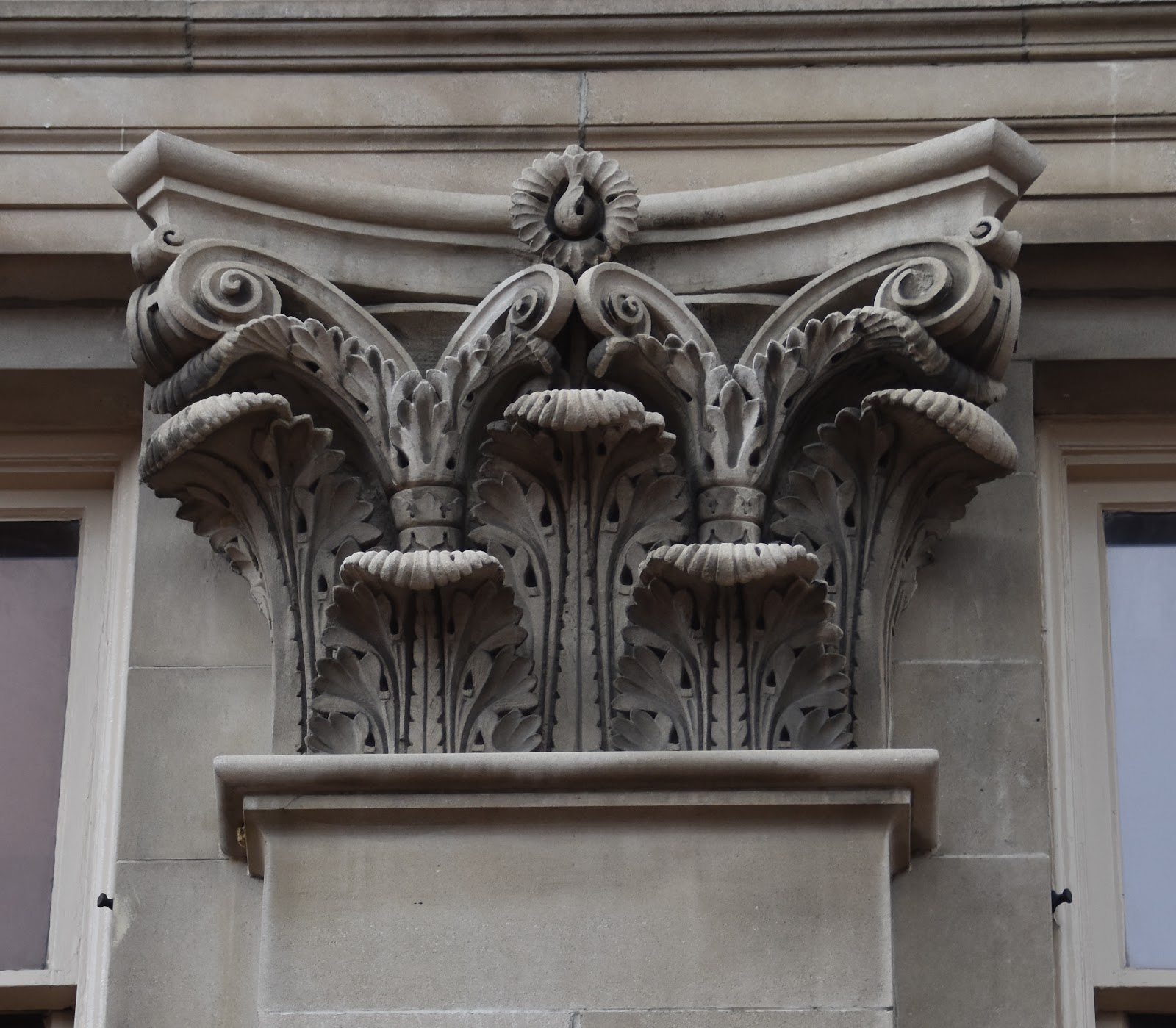Preface: Months ago I was reading an article in my morning newspaper telling me that their contributing architect, Gregory J. Scott, will be spending the next 26 months selecting an architectural style, or type of architecture, based on a letter of the alphabet that he will explain to the readers of the newspaper by means of photographs and a written explanation about that particular word that he choses. You might remember that he did much the same thing in the past and it proved to be so popular that the readers of the newspaper asked for him to do the same once again. I will also attempt to take Greg's "Architects' Alphabet" and add a few of my own photographs to his alphabet renderings as I interpret them. Might not be as impressive as Greg's letters, but I'll give it a try.
It was an ordinary day. Driving the streets of the city of Lancaster, Pennsylvania looking for architecture that illustrates the letter "A" for the word ACANTHUS. In architecture, an ornament may be carved into stone or wood to resemble leaves from the Mediterranean species of the Acanthus genus of plant which has deeply cut leaves with some similarity to that of the thistle and poppy. The word "Acanthus" is an interesting word, and one with a long association with architecture. Acanthus is a hardy plant, native to the eastern Mediterranean region and capable of enduring severe weather and harsh climates. The acanthus leaf was used by the Greeks in their temples dating back to 450 B.C. The leaf is recognized by its thick serrated and jagged edges. To the Greeks it is symbolic of long life and immortality. Ancient and modern cultures stylized the leaf and used it as decoration on top of columns. The Greeks employed three designs to cap off their columns: Doric, Ionic and Corinthian. The tradition carried into modern times. Mr. C. Emlen Urban was a "classicist architect" and enjoyed designing in the Renaissance styles associated with Greek traditions. Acanthus leaves were also used as rooftop ornamentation. Both carved wood and stone were used to create acanthus leaves. Needless to say, stone offered the longest lasting effect. The acanthus leaf is most closely associated with civic, religious and other public buildings, but can be found on large, private residences. Check out the samples that I have found in the city of Lancaster. It was another extraordinary day in the life of an ordinary guy.
 |








No comments:
Post a Comment